Winter Pet Safety: Essential Tips to Keep Your Dog Safe and Warm

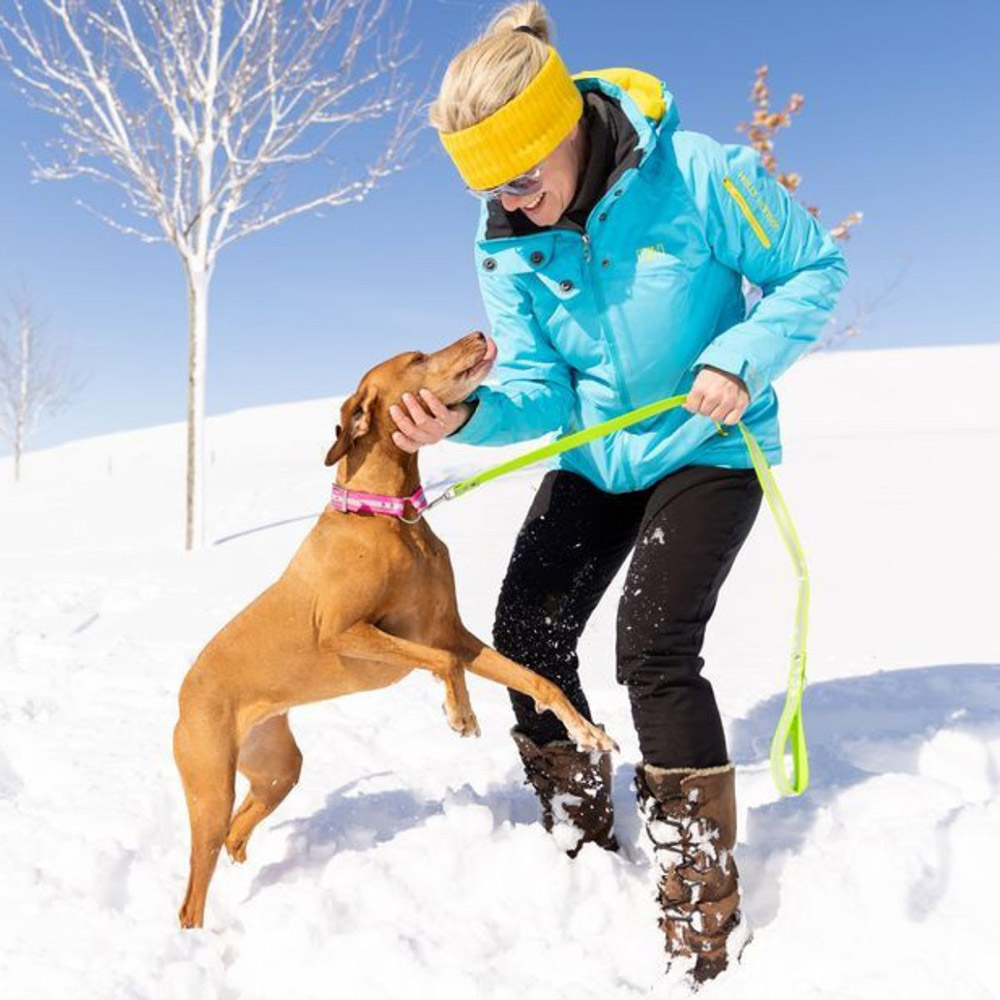 Living in areas with harsh winters can provide extra challenges for dog owners. Ensuring your dog gets enough exercise, stays safe in the cold, and avoids paw injuries from ice are just a few challenges. There are many things you can do to ensure your dog is still safe and healthy throughout the winter.
Living in areas with harsh winters can provide extra challenges for dog owners. Ensuring your dog gets enough exercise, stays safe in the cold, and avoids paw injuries from ice are just a few challenges. There are many things you can do to ensure your dog is still safe and healthy throughout the winter.
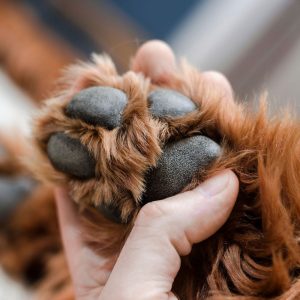 Paw Safety
Paw Safety
Many dogs will show their discomfort with the cold by walking gingerly or holding up their paws. Similar to extreme heat in the summer, extreme cold in the winter is tough on a dog’s paws and dries them out. Ice and cold can cause cuts and cracks, so regular paw checks help ensure your dog stays comfortable during winter. If your dog has long fur in between their toes, trimming it can help prevent snow and ice from accumulating and pulling their fur. This can also help prevent ice from getting trapped between their toes, which may cause pain and injuries. Another helpful practice is washing or wiping your dog’s paws after they go outside. There are many chemicals on the ground in the winter, such as road salts and antifreeze. These can be toxic to dogs if they lick them, so cleaning their paws will help prevent illness due to toxin ingestion.
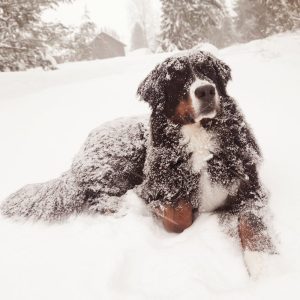 Fur Care
Fur Care
One of the main purposes of a dog’s coat is to keep them warm, so taking care of it throughout the cold months is extremely important. For breeds that need regular grooming appointments and haircuts, try to maintain a longer coat during the winter and avoid a close shave haircut, if possible, to help them stay warm. When snow accumulates on fur as a dog plays outside, it can cause matting, so all dogs (especially those with medium to long coats) should be brushed regularly. Removing snow from their coats can also pose a challenge as simply picking the snowballs off or drying with a towel may pull your dog’s hair. Using a hairdryer or giving your dog a bath can make it easier to remove snow chunks that are harder to dislodge. Applying a thin layer of coconut oil or fur balm helps repel snow and prevent buildup.
Getting Lost
Winter is a very common time of year for dogs to get lost because snow can cover up scent trails they would normally follow to find their way home. Make sure you never let your dog outside unsupervised unless they are in a gated area. When not in a gated area, try to keep your dog on a leash. Always putting a collar on your dog and getting them microchipped can also make it much easier for strangers to return your dog if they get lost.
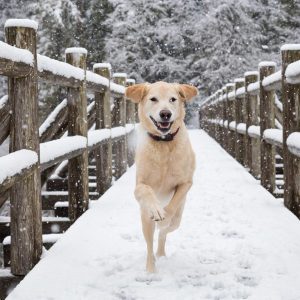 Time Outside
Time Outside
Some dogs really enjoy spending time outside in cold weather, especially breeds originating from cold areas (i.e. Bernese mountain dogs, Great Pyrenees, huskies, etc). Even if your dog wants to play in the snow a lot, it is still important to limit their time outside. Small dogs shouldn’t spend more than ten to fifteen minutes outside if temperatures are below freezing. Larger dogs can spend more time outside, between a half hour and an hour. It is also important to consider your dog’s age. Very young and very old dogs are the most sensitive to cold weather. Cold weather can be hard on joints, so older dogs and those with arthritis should limit their outdoor time to help manage pain. Pay close attention to your dog’s body language as they play outside; breed, size, and age can help indicate how long your dog can stay outside, but every dog has their own preferences. If your dog is spending a lot of time in the cold, make sure they have plenty of water available to them. Change the water often or have a heated water bowl to help prevent it from freezing over. It is also important to avoid any bodies of water while outside in the winter unless you are absolutely positive the ice is thick enough to support the weight of both yourself and your dog.
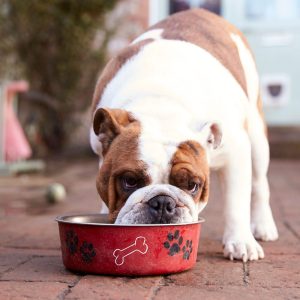 Winter Feeding
Winter Feeding
Many dogs have lower activity levels in the winter for several reasons, such as disliking the snow and their owners choosing to exercise indoors. This leads to weight gain that can take a while to drop off once the weather warms up. If this is the case for your dog, you may need to slightly decrease the amount of food they get per meal. Some dogs, however, have the opposite issue – they lose weight due to the fact that they maintain the same activity level, but require more calories to stay warm outside. If this is the case for your dog, you may need to increase their food a little bit to account for the extra calories burned. In either case, always adjust the amount of food slowly. You can always contact your vet to determine an appropriate amount of food for your dog’s adjusted calorie needs.
Keep a Backstock
Weather can be very unpredictable in the winter. Unfortunately, this can lead to shipping delays of many items, including dog food and medications. Restock food and medications when you have a week or less left. This ensures you won’t run out if a snowstorm delays deliveries.
Outdoor Chemicals
As mentioned earlier, chemicals like antifreeze and road salts tend to accumulate in the snow, making it easy for your dog to ingest. Make sure you are wiping your dog down if they play in the streets. Also ensure you are extremely cautious when using antifreeze. It has a sweet taste, which makes it appealing for dogs. Keep your dog away when handling antifreeze. Clean up spills immediately and thoroughly, as even a teaspoon of antifreeze can cause irreversible kidney damage.
Winter Products
There are many products available to help keep your dog safe and warm during the colder months. Dog jackets can be especially helpful for small dogs and breeds with short coats. Booties can help protect your dog’s paws from the elements, and paw balms can help keep their paw pads moisturized to prevent cracking. Heated dog beds can help keep your dog warm and can be used both inside and outside. Another option is to provide extra blankets for your dog during the winter.
The American Kennel Club has a page to help you determine how long is safe for your dog to spend outside. Find it here: AKC Outdoor Time Guide
The American Veterinary Medical Association has a general guide of winter safety tips for your dog. Check it out here: AVMA Winter Guide
Enjoy the snow with your furry friends!






































































